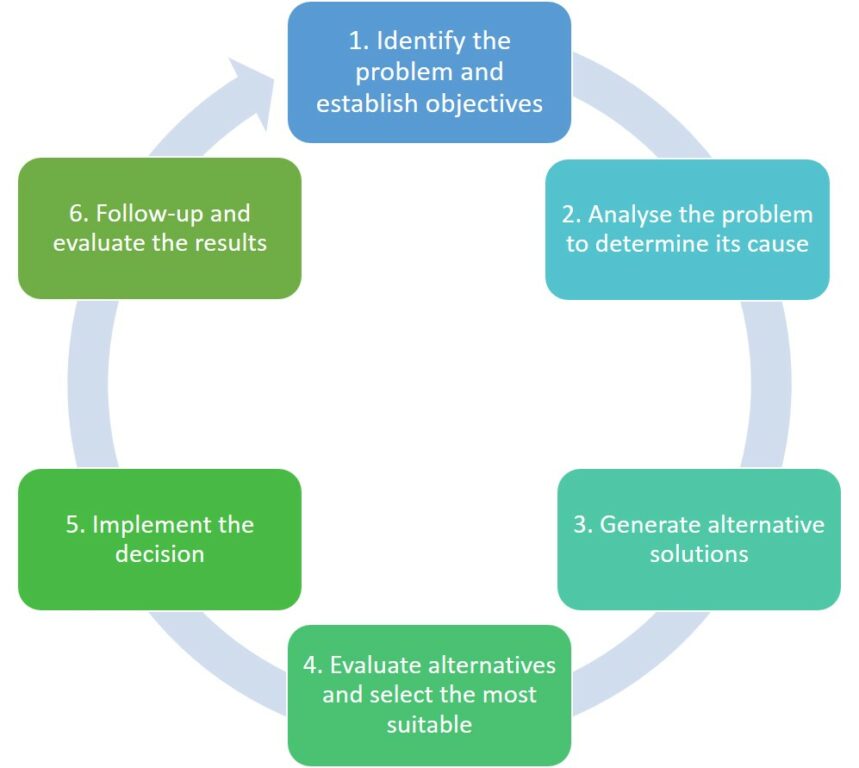We all encounter problems daily. That’s why we all benefit from good problem-solving skills.
In the workplace problem solving is an important part of any job. The skill with which we solve problems has a direct impact on our professional effectiveness. So let’s consider what problems you have solved recently. How have you handled them?
Although we are not always conscious of our method, most of us follow similar steps to solve problems. It is useful to increase our consciousness of these steps and apply a variety of proven problem-solving techniques to ensure we find effective solutions. Using the following process can improve our effectiveness in solving problems:
The process of solving problems

Identify the problem and establish objectives
This step is the most important and often the most difficult. It can be easy to jump into solution mode and spend surplus time looking for answers rather than having clarity on what really is the problem. Try to state the problem in a single sentence and ensure not to confuse the symptoms, the causes and the problem.
To establish objectives, think about the result you want. Compare where you are now and where you would like to be and be clear in what you are setting out to achieve.
Analyse the problem to determine its cause
In this step, it’s important to gather facts, ideas and opinions of others that may help in your analysis and assess the information without prejudice, preconceived ideas, or emotion to effectively determine the problem’s cause.
A technique used to uncover the main cause of the problem is to ‘ask why’ five times. Here is a ‘why’ chain for high employee turnover:
Why is there high employee turnover?
Why were the wrong people hired?
Why aren’t recruitment and selection techniques applied?
Why am I not confident in them?
Why is more training required?
We can determine from this chain the likely causes of this problem are poor selection and poor induction.
Generate alternative solutions
A choice of options needs to be considered in problem-solving. To find the best option, you must consider several solutions, that way you’re less likely to overlook the best course of action. Work on eliminating the cause of the problem and not just covering up its symptoms. Use brainstorming, creative thinking and ask others what they think to get the ideas flowing.
Evaluate the alternatives and select the most suitable
Evaluate your alternative solutions by considering the advantages and disadvantages of each. Remember the best solution will normally be the one with the most advantages and the fewest disadvantages. Ensure the most suitable option best meet your objectives.
Implement the decision
Now is the time to plan carefully how to implement your decision. Use the “who, how, what, where, why and when” prompts to develop your plan. Consider what could go wrong and how you will monitor progress to ensure your decision is working. Also, consider how you will communicate your decision to those impacted.
Follow-up and evaluate results
Routine follow-up checks will ensure that you have solved the problem. Check the symptoms again – have they gone? Take corrective action where necessary.
In summary, to continue to grow your problem-solving skills and build your personal effectiveness keep these guidelines front of mind:
- Adopt a systematic approach
- Focus on important decisions
- Avoid making snap decisions
- Don’t become a victim of analysis paralysis
- Base your decision on facts
- Don’t be afraid of making the wrong decisions
- Learn from your mistakes
- Use your imagination
- Resist making decisions under stress
- Make your decision and then move on


